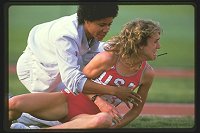 |
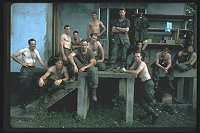 |
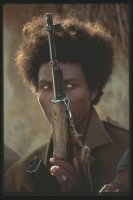 |
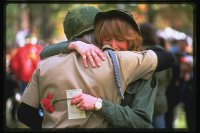 |
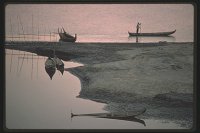
|
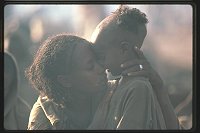 |
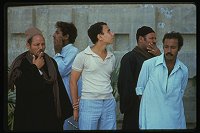 |
|
 |
 |
 |
 |

|
 |
 |
|
1. At the 1984 Olympics in Los Angeles, everybody thought Mary Decker would sweep her race (Women 3000m). Her main competitor was South African runner Zola Budd, who was well known for running bare foot. After a week of being stacked next to other photographers like cord wood, I found a quiet little spot and set up my gear. On the fifth lap, the unbelievable happened — Budd tried to pass Decker; their feet became intertwined, and Decker fell to the ground. I shipped the film undeveloped to New York that night. Until you see it, you never know if you really have a picture or not. My worries were allayed Monday morning when I saw the picture displayed prominently in Time.
2. In 1983, the U.S. invaded Grenada, ostensibly to protect students at the St. Georges Medical Colleges. After 10 days of trying to round up suspected leftists, the operation started to wind down. Walking through a quiet village one Sunday morning, I came upon a group of GIs. I turned and instinctively shot a few frames. There was a wondrous quality to the way they stood there that I don't think I could have gotten if I had directed them all day.
3. On a trip into rebel-held Eritrea in 1977 I spent about two weeks in the countryside. One afternoon, I was just looking at faces through a long lens on my camera. It can be difficult to blend in when you are an outsider. With a longer lens, though, you can back off and avoid becoming the attraction. This picture, with the fighter perched on his AK47 just so, made for one of those moments.
4. In 1993, I attended the dedication of the Vietnam Women's Memorial in Washington, D.C. (the statue was created by Glenda Goodacre ’61). This was a wonderful day. Hundreds of women, mostly nurses, came together with colleagues and friends. There was a palpable sense of joy among the group, mixed with the remembered pain they had all shared. At one moment, a male vet walked up to a woman standing in the crowd, a stranger to him. He put his arms around her and spoke the familiar words of Vietnam vets, "Welcome home." They must have hugged for a minute. You could feel the energy. When I sent her a print afterward, I received a letter that reminded me why I take pictures. She was so thankful that I had caught that emotional moment for her. We are still in touch.
5. Visiting Mandalay, Burma, in 1979, I awoke early and drove to the banks of the Irrawaddy. I had gone as a tourist, trying to do a general reportage on the country. I had taken only two cameras, and scattered 40 rolls of film in my luggage. (NOTE: Don't put your film in checked luggage. The new scanners will destroy your images!) My camera was perched on the back of an old Buick. I framed the water, the boats in the water, and those anchored in the sand. All of a sudden, as if by command, a solitary boat entered the frame from the left, and slowly rode through my viewfinder. I fired two or three pictures and, of those, this one with the perfect balance is my favorite.
6. During the 1984 drought and subsequent famine in Ethiopia,
I had spent some time trying to get from Addis Ababa to the stricken areas.
I finally got a seat on an RAF relief plane going north. By the afternoon
I was in the refugee camps, where doctors were trying to get people medicated
and fed. Amid the horror of the sick and dying, I saw a mother and
child sitting by a smoky fire.
Using a long lens to avoid being right on top of them, I spent a few
minutes watching, occasionally taking a picture. There was tenderness
between the two I have seldom seen. This is the kind of picture that
can tell us what love is really all about.
7. I flew to Cairo after the assassination of President Sadat in October 1981. I had covered Sadat in the U.S. and in Egypt and Israel. After years of corruption and big gaps in government development plans, Sadat was not nearly so beloved by Egyptians as he was by, say, the American media. We saw him as a courageous figure who had determined that peace with Israel was a positive aspiration. Many of his countrymen saw him as a nagging despot, whose friends were profiting from the large foreign aid grants. This picture, done on a Cairo street the day of the funeral, seemed to me to sum up the ambivalence of the Egyptian people.